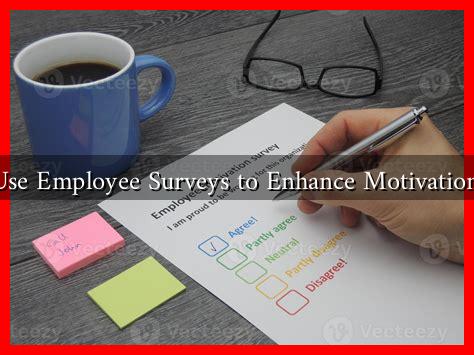-
Table of Contents
How to Use Employee Surveys to Enhance Motivation in 2025
In the rapidly evolving workplace of 2025, employee motivation is more crucial than ever. With the rise of remote work, hybrid models, and a focus on mental health, organizations must adapt their strategies to keep employees engaged and motivated. One of the most effective tools at their disposal is the employee survey. This article explores how to leverage employee surveys to enhance motivation, providing actionable insights and examples.
The Importance of Employee Surveys
Employee surveys serve as a vital communication channel between management and staff. They provide insights into employee satisfaction, engagement levels, and areas needing improvement. According to a study by Gallup, organizations with high employee engagement are 21% more profitable than those with low engagement levels. This statistic underscores the importance of understanding employee sentiments through surveys.
Designing Effective Employee Surveys
To maximize the effectiveness of employee surveys, organizations must focus on design and implementation. Here are some key considerations:
- Clear Objectives: Define what you want to achieve with the survey. Are you looking to measure job satisfaction, gather feedback on company culture, or assess the effectiveness of remote work policies?
- Anonymous Responses: Ensure anonymity to encourage honest feedback. Employees are more likely to share their true feelings when they know their responses are confidential.
- Balanced Questions: Use a mix of quantitative (e.g., rating scales) and qualitative (open-ended) questions to gather comprehensive insights.
- Regular Frequency: Conduct surveys regularly (e.g., quarterly or bi-annually) to track changes over time and respond to emerging issues promptly.
Analyzing Survey Results
Once the surveys are conducted, the next step is to analyze the results effectively. Here are some strategies:
- Identify Trends: Look for patterns in the data. Are there specific areas where employees consistently express dissatisfaction? Identifying trends can help prioritize action items.
- Segment Data: Analyze results by department, tenure, or demographic factors to uncover specific issues affecting different groups.
- Benchmarking: Compare your results with industry standards or previous surveys to gauge your organization’s performance.
Implementing Changes Based on Feedback
Collecting feedback is only the first step; organizations must act on the insights gained from employee surveys. Here’s how to implement changes effectively:
- Communicate Results: Share survey results with employees to demonstrate transparency. Highlight both positive feedback and areas for improvement.
- Develop Action Plans: Create specific action plans based on survey findings. For example, if employees express a desire for more professional development opportunities, consider implementing training programs.
- Follow Up: After implementing changes, follow up with employees to assess the impact. Conducting a follow-up survey can help measure improvements and show employees that their feedback is valued.
Case Study: Company X’s Success with Employee Surveys
Company X, a mid-sized tech firm, faced declining employee morale in 2024. They decided to implement quarterly employee surveys to understand the root causes of dissatisfaction. The results revealed that employees felt disconnected from leadership and desired more recognition for their contributions.
In response, Company X introduced a recognition program that allowed peers to acknowledge each other’s efforts. They also increased communication from leadership through monthly town hall meetings. By the end of 2025, employee engagement scores had risen by 30%, demonstrating the power of acting on survey feedback.
Conclusion
As we move into 2025, utilizing employee surveys effectively can significantly enhance motivation within organizations. By designing thoughtful surveys, analyzing results, and implementing changes based on feedback, companies can create a more engaged and motivated workforce. The case of Company X illustrates that when organizations listen to their employees and act on their insights, they can foster a culture of motivation and productivity. In a world where employee satisfaction directly correlates with business success, leveraging surveys is not just beneficial; it’s essential.
For more insights on employee engagement and motivation strategies, consider exploring resources from Gallup and SHRM.

